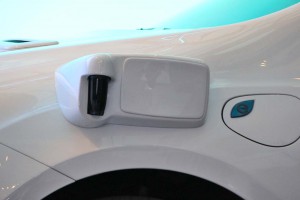With the company already under fire for tolerating blatant sexism and its take no prisoners internal culture, Uber was jolted again this week when Google’s self-driving car subsidiary, Waymo, filed suit in U.S. District Court, charging the ride-hailing service with stealing key intellectual property.
The Waymo legal complaint and subsequent blog post on the company’s web site outlines in dramatic fashion allegations that Uber used the $680 million acquisition last summer of a Silicon Valley start-up company called Otto, which was founded by a former Google employee, to pull off the theft.
Uber, which only this week brought in former Attorney General Eric Holder, to investigate the company’s problems with sexism, was slow to respond to the Waymo charges.
Waymo uncovered the theft when it inadvertently received an e-mail from one of its suppliers with an attachment that held the drawings for a circuit board designed by Otto, Waymo noted in the blog post that went up after the lawsuit was filed in San Francisco.
(Uber hires former U.S. Attorney General to investigate harassment claims. Click Here for the story.)
Google invested $250 million in Uber in 2013, but relations between the two tech giants have soured in recent months. Google executives who served on the Uber board of directors quit last fall. The executives, among them the head of Google’s venture capital fund, quit after being prevented from attending Uber board meetings.
Waymo noted in a blog post on the company’s web site, “Competition in the self-driving space is a good thing; it pushes everyone to develop better, safer and more affordable technology. But we believe that competition should be fueled by innovation in the labs and on the roads, not through unlawful actions.
“Recently, we uncovered evidence that Otto and Uber have taken and are using key parts of Waymo’s self-driving technology. One of the most powerful parts of our self-driving technology is our custom-built LiDAR — or “Light Detection and Ranging.
“LiDAR works by bouncing millions of laser beams off surrounding objects and measuring how long it takes for the light to reflect, painting a 3D picture of the world. LiDAR is critical to detecting and measuring the shape, speed and movement of objects like cyclists, vehicles and pedestrians,” Waymo said in its post.
(Sex harassment claim raises more problems for Uber. Click Here to get details.)
“Hundreds of Waymo engineers have spent thousands of hours, and our company has invested millions of dollars to design a highly specialized and unique LiDAR system. Waymo engineers have driven down the cost of LiDAR dramatically even as we’ve improved the quality and reliability of its performance. The configuration and specifications of our LiDAR sensors are unique to Waymo. Misappropriating this technology is akin to stealing a secret recipe from a beverage company.
“In 2016, Uber bought a six-month old startup called Otto and appointed its founder (a former employee on our self-driving car project) as its head of self-driving technology. At the time, it was reported that Otto’s LiDAR sensor was one of the key reasons Uber acquired the company.”
It was that LiDAR sensor that changed things. A Waymo supplier also working with Uber accidentally emailed machine drawings of the “new” Uber LiDAR circuit board, which looked remarkably Waymo’s design.
The company discovered a former employee, Anthony Levandowski, downloaded more than 14,000 highly confidential and proprietary design files for Waymo’s various hardware systems, including designs of Waymo’s LiDAR and circuit board.
(To see more about Waymo testing its new autonomous system, Click Here.)
To gain access to Waymo’s design server, Waymo alleges Levandowski searched for and installed specialized software onto his company-issued laptop and downloaded 9.7 GB of Waymo’s highly confidential files and trade secrets, including blueprints, design files and testing documentation.


